Top Rankings
Friendship Aspire Academies Arkansas School District ranks among the top 20% of public school district in Arkansas for:
Category
Attribute
Math Proficiency
Highest math proficiency (Top 10%)
For the 2025 school year, there are 2 public middle schools serving 232 students in Friendship Aspire Academies Arkansas School District.
Public Middle Schools in Friendship Aspire Academies Arkansas School District have a diversity score of 0.22, which is less than the Arkansas public middle school average of 0.60.
Minority enrollment is 98% of the student body (majority Black), which is more than the Arkansas public middle school average of 41% (majority Black).
Overview
This School District
This State (AR)
# Schools
7 Schools
352 Schools
# Students
1,307 Students
147,541 Students
# Teachers
87 Teachers
13,335 Teachers
Student : Teacher Ratio
15:1
15:1
District Rank
Friendship Aspire Academies Arkansas School District, which is ranked within the top 50% of all 258 school districts in Arkansas (based off of combined math and reading proficiency testing data) for the 2021-2022 school year.
Overall District Rank
#94 out of 259 school districts
(Top 50%)
(Top 50%)
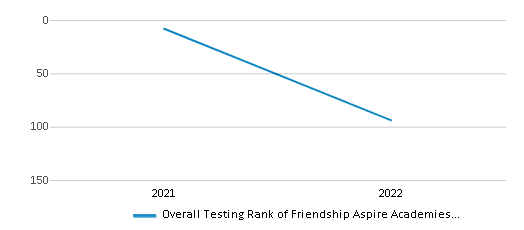
Math Test Scores (% Proficient)
50-54%
38%
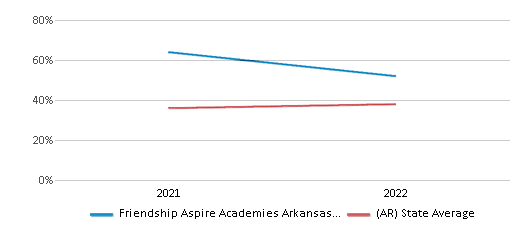
Reading/Language Arts Test Scores (% Proficient)
30-34%
40%
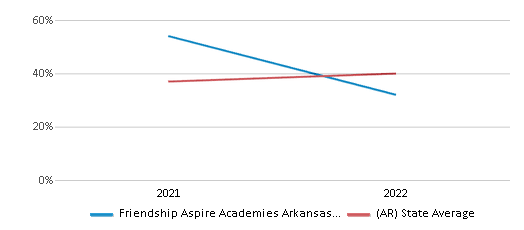
Science Test Scores (% Proficient)
20-24%
36%

Students by Ethnicity:
Diversity Score
0.12
0.60
# American Indian Students
1 Student
846 Students
% American Indian Students
n/a
1%
# Asian Students
5 Students
2,865 Students
% Asian Students
1%
2%
# Hispanic Students
54 Students
21,477 Students
% Hispanic Students
4%
14%
# Black Students
1,226 Students
28,045 Students
% Black Students
94%
19%
# White Students
16 Students
87,000 Students
% White Students
1%
59%
# Hawaiian Students
n/a
1,533 Students
% Hawaiian Students
n/a
1%
# Two or more races Students
5 Students
5,775 Students
% of Two or more races Students
n/a
4%
Students by Grade:
# Students in PK Grade:
-
20
# Students in K Grade:
172
725
# Students in 1st Grade:
206
806
# Students in 2nd Grade:
191
836
# Students in 3rd Grade:
173
826
# Students in 4th Grade:
171
1,120
# Students in 5th Grade:
135
4,995
# Students in 6th Grade:
91
20,844
# Students in 7th Grade:
75
36,641
# Students in 8th Grade:
66
37,270
# Students in 9th Grade:
27
18,603
# Students in 10th Grade:
-
8,958
# Students in 11th Grade:
-
8,347
# Students in 12th Grade:
-
7,514
# Ungraded Students:
-
36
District Revenue and Spending
The revenue/student of $2,621 in this school district is less than the state median of $13,132. The school district revenue/student has declined by 75% over four school years.
The school district's spending/student of $2,392 is less than the state median of $13,043. The school district spending/student has declined by 75% over four school years.
Total Revenue
$3 MM
$6,371 MM
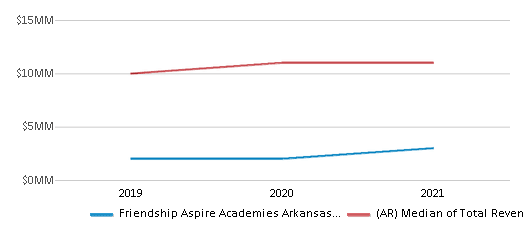
Spending
$3 MM
$6,327 MM
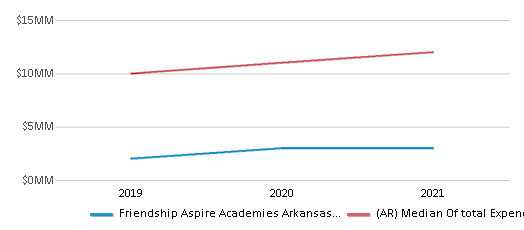
Revenue / Student
$2,621
$13,132
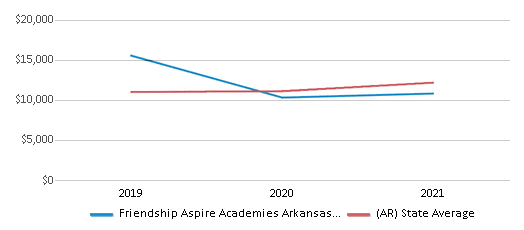
Spending / Student
$2,392
$13,043
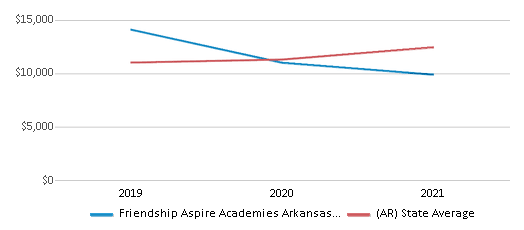
Best Friendship Aspire Academies Arkansas School District Public Middle Schools (2025)
School
(Math and Reading Proficiency)
(Math and Reading Proficiency)
Location
Grades
Students
Rank: n/an/a
Friendship Aspire Academy Little Rock Middle School
Charter School
3615 West 25th Street
Little Rock, AR 72202
(501) 621-1500
Little Rock, AR 72202
(501) 621-1500
Grades: 6-8
| 57 students
Rank: n/an/a
1501 West 73rd Ave
Pine Bluff, AR 71609
(870) 218-1250
Pine Bluff, AR 71609
(870) 218-1250
Grades: 6-8
| 175 students
Recent Articles

Year-Round Or Traditional Schedule?
Which is more appropriate for your child? A year-round attendance schedule or traditional schedule? We look at the pros and cons.

Why You Should Encourage Your Child to Join a Sports Team
Participating in team sports has a great many benefits for children, there is no doubt. In this article you will learn what those benefits are.

White Students are Now the Minority in U.S. Public Schools
Increasing birth rates among immigrant families from Asia and Central and South America, combined with lower birth rates among white families, means that for the first time in history, public school students in the United States are majority-minority. This shift in demographics poses difficulties for schools as they work to accommodate children of varying language abilities and socio-economic backgrounds.





